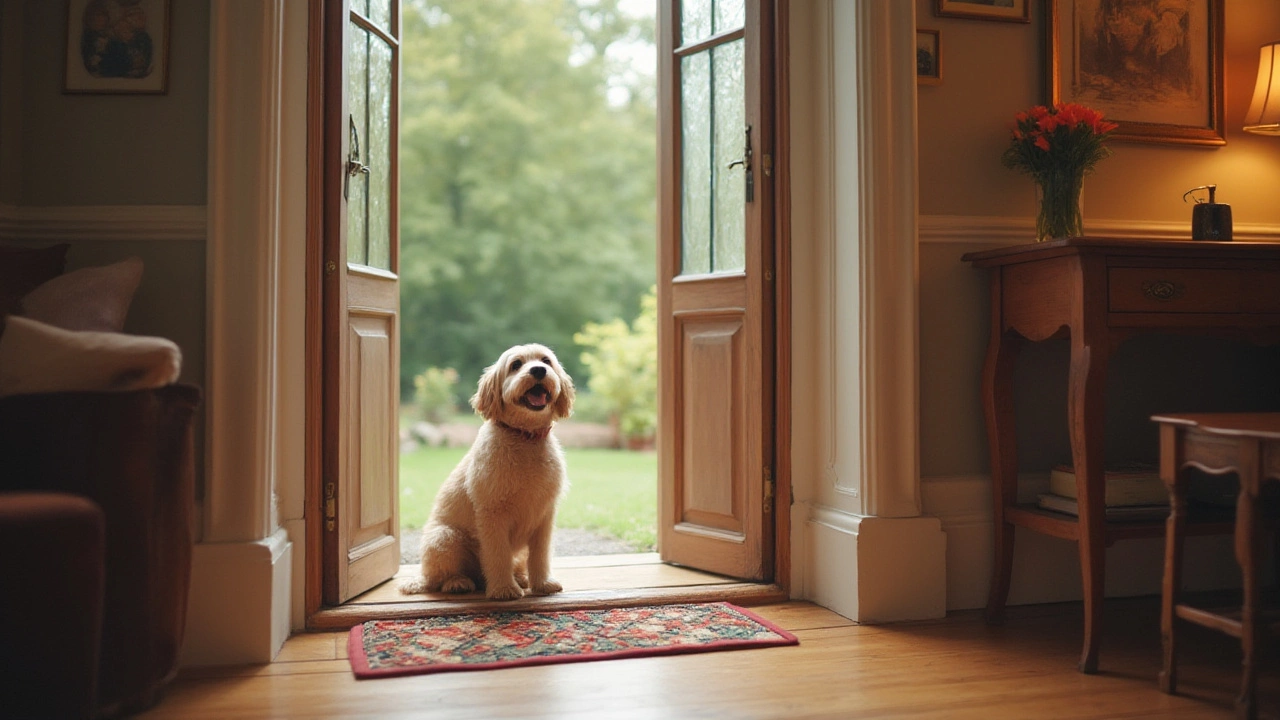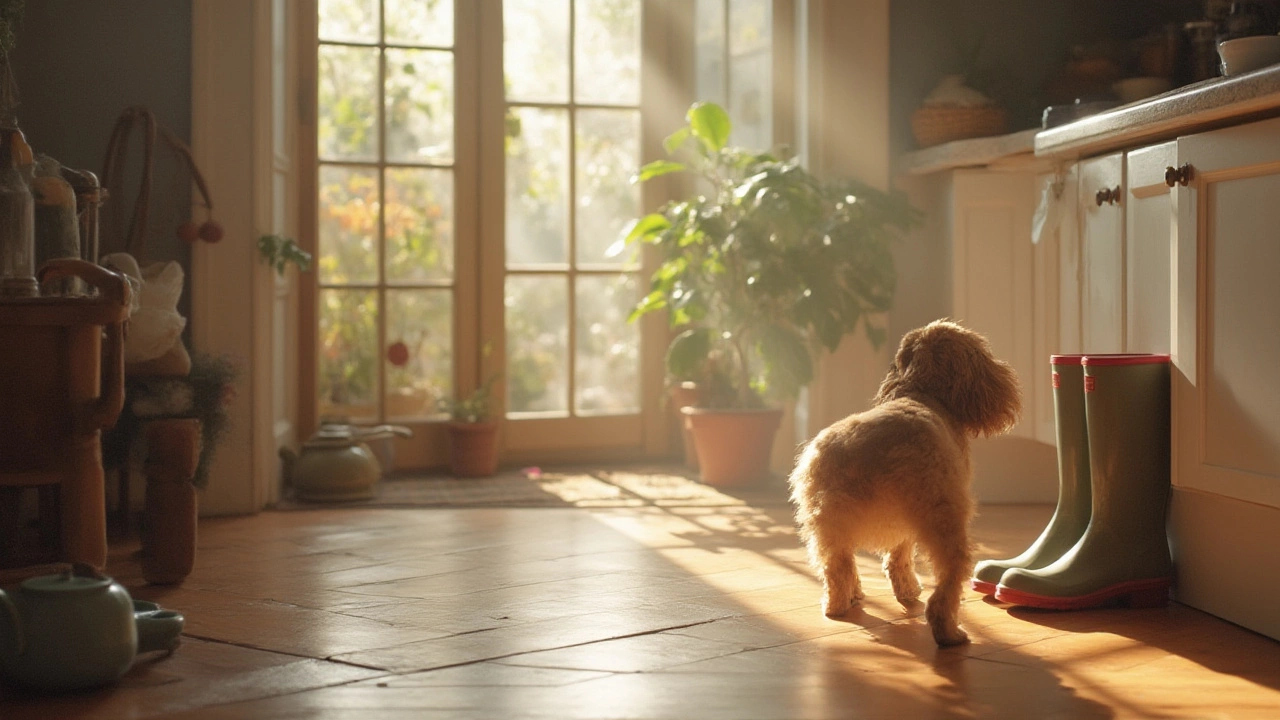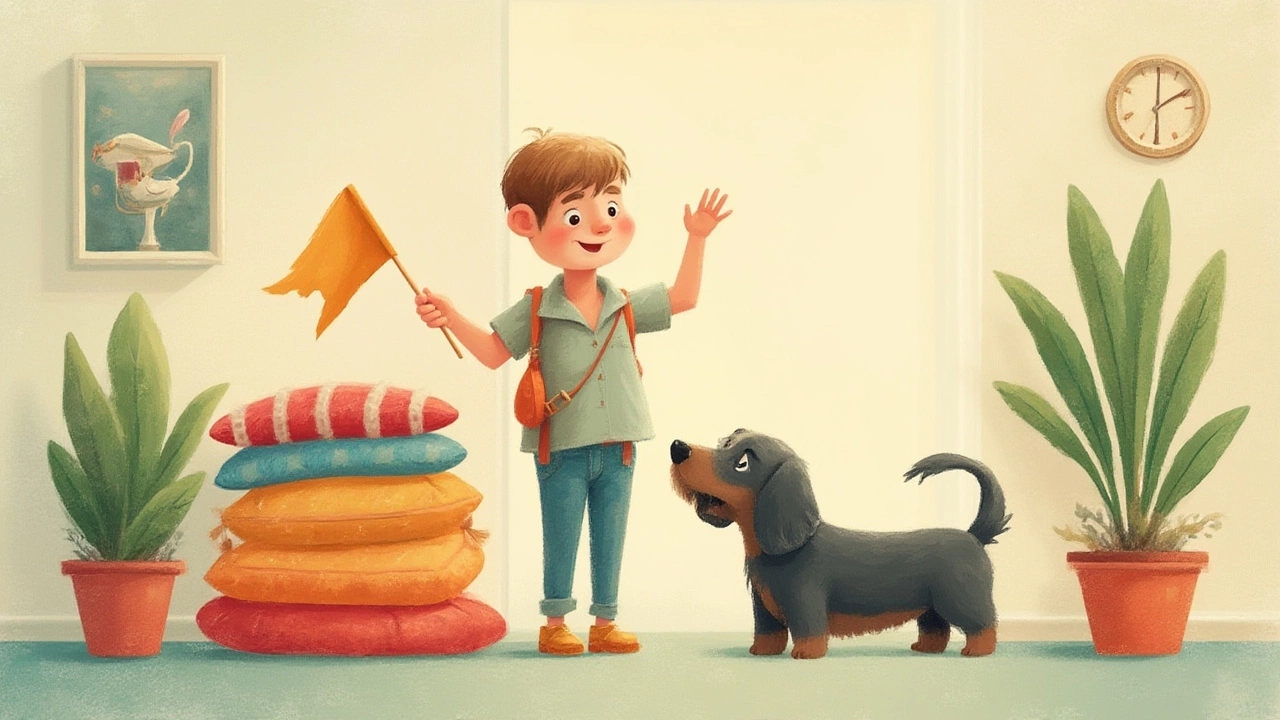
If your dog has marched into your bedroom with muddy paws for the hundredth time, you’re probably wondering what your options are—especially if you don’t want the hassle or aesthetics of a clunky dog gate. The truth is, gates aren’t the only answer. In fact, many people—myself included—have found that keeping a determined pup out of a room is as much about creativity and consistency as it is about barriers. There are more subtle, clever ways to give your dog the 'off-limits' memo without shutting every door or tripping over hardware.
Why Dogs Enter Rooms—and Why Gates Aren’t the Only Solution
Before we get practical, let’s address the real issue: dogs don’t randomly pick rooms. There’s usually a reason. Maybe your kitchen smells like last night’s roast chicken. Or your home office has a cozy rug that’s just right for an afternoon nap. Dogs are natural explorers, and if something draws them in, a physical barrier isn’t always the most effective (or necessary) answer.
Sure, gates work—until they don’t. Big breeds can jump over them, small breeds squeeze underneath. And honestly, tripping on a wobbly gate in the dark is a vibe no one wants in their home. Instead, understanding what pulls your dog into that room is step one. Maybe it’s food scraps in the trash, your scent on a sweater, an interesting noise, or just curiosity. When you can spot the trigger, you’re halfway to solving the problem without ever pulling out your toolbox.
One survey published by the American Pet Products Association in 2024 found that 68% of U.S. dog owners wish they could keep their pets out of at least one room in the house, but only 39% actually use gates full-time. So, most people are improvising with other techniques. Don’t worry—you’re not alone in this struggle.
So, what’s your best move? First, tackle the attractors. For example, covering trash cans, keeping dirty laundry off the floor, or cleaning up food spills can whittle down some allure. Dogs have sensitive noses; leaving just one kitchen crumb can seem like a gourmet treasure hunt. Second, think about the layout of your space—where does your dog tend to go when you’re not looking? It’s usually spots with high 'reward' factor. Remove or minimize those rewards, and you’ll find your dog’s motivation to push boundaries starts to fade.
All that said, the big secret here is this: dogs thrive on consistency and cues. Once you set up a routine—using boundaries, training, or deterrents—they catch on fast. Gavin used to call our living room “Luna’s forbidden palace” because our retriever would try every trick to get in. Now? She won’t step over a certain rug, and no gates in sight. A mix of clever barriers, smart training, and a little environmental tweak can work wonders.

Physical and Sensory Barriers That Don't Involve Gates
Let’s get into the nuts and bolts. If you want to block access without a standard pet gate, you have options, and plenty of them are as simple as a rug, a squirt bottle, or a well-placed pet bed.
- Furniture Arrangement: Shifting furniture, rolling ottomans in front of the doorway, or using boxes can do the trick for smart or tiny dogs. Dogs usually avoid moving through awkward, narrow spaces, especially if the layout changes often enough to stay mysterious.
- Non-Slip Mats or Rugs: Dogs hate slippery surfaces, and some avoid stepping on tinfoil, plastic mats, or carpets with strange textures. Lay a strip of tinfoil, a plastic chair mat, or crinkly shelf liner near the threshold, and see what happens. You’ll be surprised how quickly some pups develop an aversion.
- Scent-Based Deterrents: Dogs’ noses are famously sensitive. Citrus scents (like orange or lemon peels), vinegar, or specially made pet repellents can be placed near the doorway. These don’t harm your dog, but they’re usually strong enough to make that area less attractive. One study from 2021 found that 82% of dogs avoided thresholds with citrus sprays.
- Sticky Surfaces: Double-sided tape or sticky pads at the doorway is another classic. Many dogs detest having their paws catch on anything, even a post-it note. If you place adhesive strips across the entry, most pups will pause, then back away after a few sticky encounters. (Just don’t leave them down too long, or you’ll be cleaning forever.)
- Motion Detectors: There are clever electronic pet deterrents now that make a harmless beep, puff of air, or squirt water if the pet crosses a certain line. Set these up at the doorframe—no construction required. The average cost? Between $40 and $120 online. It’s not free, but it’s less of an eyesore than a bulky gate.
- Temporary Physical Barriers: If you just need a short-term fix (like company coming over or afternoon cleaning), use laundry baskets, folded chairs, or even a vacuum left in the entryway. Some dogs have weird fears—vacuums, big boxes, suitcases, you name it. Test some items and see what works for your pup.
- Door Curtains or Panels: Hanging a sheer curtain, beaded panel, or tension-rod fabric across the doorway creates a gentle boundary that smaller or more nervous dogs are often reluctant to cross. Make it extra effective by tucking a citrus-scented sachet at the bottom.
The cool part? You can mix and match these ideas depending on your dog’s breed, age, and personality. Think of it as ‘designing your boundary’ instead of just blocking it. The versatility is endless—and it’s much easier to keep the space looking like a home, not a kennel.
| Method | Estimated Cost | Success Rate (user surveys) |
|---|---|---|
| Furniture Shift | $0 | 55% |
| Non-Slip Mats/Strips | $5-15 | 62% |
| Scent Deterrents | $3-12 | 70% |
| Sticky Surfaces | $6-10 | 58% |
| Motion Devices | $40-120 | 80% |
| Temporary Barriers | $0-20 | 60% |
| Door Curtains | $10-30 | 61% |
Result? You get to experiment with what fits your life—without taking out a second mortgage for fancy equipment or redesigning your home. Plus, a lot of these tactics are easy to toss, switch, or adjust as your puppy gets older and wiser (or just more stubborn).

Training and Routine: Turning "Off Limits" Into a Habit
Changing your dog’s behavior is like teaching a toddler not to reach for cookies on the counter—it’s a process. But it works. Consistency, clear signals, and rewards go a long way. Plus, you avoid having to outsmart your dog with new physical obstacles every time they figure one out.
Start by deciding exactly which rooms or areas are off limits, and be clear every single time. If your dog sometimes sneaks into your office when you’re distracted but gets shooed away when you notice, they’ll try again. If you always calmly escort them out or use a specific command, the boundaries click faster.
Pick a cue word or phrase, like "leave it" or "out". Use it just as your dog crosses into forbidden territory. Most dogs, especially if food is involved, will start to connect the dots quickly. Whenever your dog backs away or sits outside the room, treat it like they discovered a magic trick. Lots of treats, happy praise, sometimes even a favorite toy tossed for good measure. You’re not just stopping an unwanted habit—you’re building a new one and making it rewarding.
- Always reinforce the rule for everyone in the household. Dogs will find the weak link! If Gavin leaves the office door open and Luna strolls in to nap, your consistency takes a hit. If you have kids, make it a game for them to help notice when the dog is about to cross into the "no-go zone".
- Use positive reinforcement—it works way better than punishment. Scolding can make your dog anxious and more likely to sneak or hide. If you reward for the right behavior, your dog knows what earns their treat, and what doesn't.
- Set up a comfy "yes zone"—another room with a bed, toys, treats, and maybe a piece of your worn clothing. Make your dog’s favorite hangout even more irresistible than the "do not enter" space. Dogs who feel part of the family and have their own spot to relax are usually less motivated to break boundaries.
- Never frame off-limits spaces as punishments. It should just be a neutral, respectful rule—like telling a kid not to touch hot pans. When banned rooms become loaded with drama, dogs start to test them out of anxiety or stubbornness.
The best part? You’re building trust and respect. Once your dog gets used to not following you into certain rooms, that habit sticks. It might take a few weeks—or a few months for the most determined breeds—but most pets adapt. And with every win, you get more peace, less sweeping, and a happier dog who still feels included, not exiled.
Think of all the time you’ll save not wrangling your pup out of your clean laundry, or not explaining to guests that the mud on the sofa was, in fact, your dog’s masterpiece. There’s no need for complicated gadgets or fortress-level setups. Just a little training, some clever boundaries, and maybe the magic of a lemon peel or two. That’s how you keep your dog out of the room—without a gate, and without driving yourself crazy.




